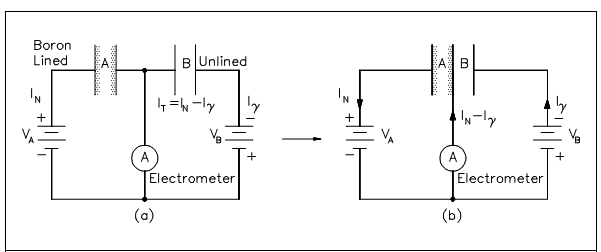Compensated Ion Chamber:
Gamma compensation is needed at intermediate reactor power stages to ensure accurate power reading.
DESCRIBE how a compensated ion chamber compensates for gamma radiation.
Compensating to the response to gamma rays extends the meaningful range of the ionization chamber. The Compensated ionization chambers contain of two separated chambers; one chamber is coated along with boron, and one chamber is not. The coated chamber is sensitive to gamma rays and neutrons both, although the uncoated chamber is sensitive just to gamma rays. Alternatively of having two divided ammeters and subtracting the currents, the subtraction of these currents is complete electrically, and the net outcome of both detectors is read on a single ammeter. The reading acquired from the ammeter denotes the difference among the two currents if the polarities are arranged so in which the two chambers' currents oppose one another. One plate of the compensated ion chamber is general to both chambers; one side is coated along with boron, although the other side is not.
Below Figure display the basic circuitry for a compensated ion chamber.

Figure: Compensated Ion Chamber
The boron coated chamber is referred to as the working chamber and the uncoated chamber is known as the compensating chamber. While exposed to a gamma source, a battery for the working chamber will set up a current flow which deflects the meter within one direction. A compensating chamber battery will set up a current flow which deflects the meter in the opposite direction. The net current flow is exactly zero if both chambers are identical and batteries are of the same voltage. Thus, the compensating chamber cancels the current because of gamma rays.